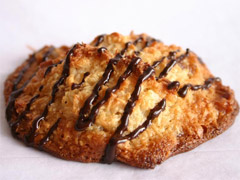


Did you know that the process of making foie gras was taken to France by Jewish immigrants?
Although the Egyptians were the first to force feed geese with figs, it was their Hebrew slaves that copied the technique and transported it to Europe, eventually leading to this rather non-Kosher form of production in south western France. The humble hot dog, a fast food staple that is as American as Disneyland, was first introduced to the US by German Jews. In the late 19th century thousands of Jewish refugees arrived in London after fleeing persecution in Eastern Europe following the death of Tsar Alexander II, but how did they influence the capital’s eating habits?
[b]Fish ‘n’ chips[/b]
Fish is a very important part of Jewish cuisine, it is custom to eat it on the Sabbath as in Judaism the fish represents fertility; it is said that Jacob once told his children to multiply like fish in the sea. The Jewish origins of battered fish have been widely reported and the method of dipping fish in egg and flour before frying in breadcrumbs and eating cold has existed in England since the 16th century thanks to Portuguese Marrano Jews, however it wasn’t until the Jewish community established itself in London’s East End that this dish began to gain popularity amongst the masses.
Jewish immigrant Joseph Malin decided to pair the golden deep fried fish with chips - possibly a Flemish creation - creating an iconic meal that would become as representative of the UK around the world as the Queen. He opened the first ever chip shop on Cleveland Street in 1860 (although another possible candidate for first ever fish and chip shop was in Lancashire, courtesy of John Lees).
The first few “chippies” as they became known were restaurants, with seating and carpeted floors, which meant that for the first time the working classes were able to dine in surroundings that were normally the preserve of the wealthy. As a portion of fish and chips was cheap, it also represented a break from the normal diet of many of London’s poorer inhabitants, who during Victorian times had no choice but to subsist on gruel, bread and vegetable scraps.
Today, the fish and chip shop is as ubiquitous on London’s high streets as the public house, in fact it could be said that the two go hand in hand.
\n\n[b]Smoked salmon[/b]
Eastern and Northern European countries have been smoking and salting fish for thousands of years, however when their inhabitants started to migrate to the US and the UK they would start applying these methods to local, more expensive types of fish such as salmon, hence the luxurious pink slices that go on canapés and in cream cheese bagels exist partly thanks to Jewish influence. Smokery and wholesaler H. Forman & Son may stock caviar as well as owning a fine dining restaurant, however the original branch was established by a Russian Jewish immigrant in 1905 in – you guessed it - the East End.
Forman devised the “London cure”, a way of curing fish that involved light oak smoke and less salt than usual, resulting in a milder cure than other treatments. The smokery is still in operation to this day, on the appropriately named Fish Island near Stratford, supplying the food hall at Harrods as well as providing a key ingredient for many of the dishes at The Dorchester’s restaurants.
[b]Bagels[/b]
As with fish and chip shops, it was also during the 19th century when East End bakeries started selling bagels. Thanks to their doughnut shape, they could easily be displayed on racks or hung on pieces of string. Thought to be a Polish invention, bagels were easy to produce and transport thanks to the hole in their middle; legend has it that the first bagels were meant to resemble a stirrup (the Austrian word for stirrup is “beugel”) and were to be presented to the King of Poland by a loyal Jewish baker, however there are dozens of other stories flying around that dispute this.
Another theory is that bagels were given their now characteristic ring shape to give pregnant women something to bite on during labour, presumably in the absence of an epidural. Bagels may be more easily associated with New York than London, however Beigal Bake and Beigal Shop on Brick Lane are practically institutions. Both these 24-hour bakeries specialise in salt beef and smoked salmon, providing late night carb-induced satisfaction for post-clubbing cravings.
\n\n[b]Macaroons[/b]
They may not be as intrinsic to London food as fish and chips or bagels, but rumour has it the macaroon is set to swiftly overtake the cupcake as the capital’s kitsch teatime sweet of choice, particularly since Harrods, Selfridges and La Maison du Chocolat started selling brightly coloured varieties with flavourings like orange blossom, salted caramel and cappuccino, packaged in boxes as pretty as the macaroons themselves.
Their origin has been traced back to an 18th century Italian monastery and it is thought that Italian Jews passed on the recipe. Macaroons are often consumed during Passover as the ingredients used to make them are permitted during this holiday; to be clear, it’s the almond and egg white delights also known as French macaroons that are popular in Jewish cuisine, and not the coconut puffs referred to as English macaroons.
Cafes devoted exclusively to the crunchy treats are already cropping up in the capital, such as Clapham’s Patisserie Macaron - expect to see one in every yummy mummy neighbourhood soon.


